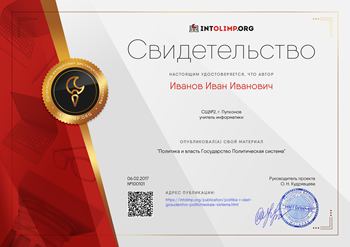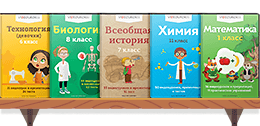Научно-практическая конференция младших школьников
«Я познаю мир»
«Зимние Олимпийские игры»
секция «Английский язык»
автор:
Костенко Владимир
4 класс, МБОУ СОШ № 21
с. Красносельское, Динской район
Научный руководитель:
Худаева Ольга Владимировна,
учитель английского языка
с. Красносельское, 2018 г.
CONTENS
Introduction ……………………………………………………………………7
Chapter 1.……………………………………………………………………….8
Chapter 2………………………………………………….…………………….11
Chapter 3………………………………………………………………………..14
Conclusion…..…………………………………………………………………..16
Sources………………..…………………………………………………………17
«Зимние Олимпийские Игры»
Костенко Владимир
4 класс, БОУ СОШ № 21
Краткая аннотация
Данная работа представляет собой исследование различной информации по теме «Зимние Олимпийские Игры», которая позволяет изучить историю Олимпийских Игр, количество стран-участниц, виды спорта, представленные на Зимних Олимпийских Играх, медальные зачеты стран, Зимние Олимпийские игры 2014 в г. Сочи.
«Зимние Олимпийские Игры»
Костенко Владимир
4 класс БОУ СОШ № 21
Аннотация
Цель данной работы: познакомиться с Олимпийским движением, первыми зимними Олимпийскими Играми выяснить какие виды спорта были представлены на первых Зимних Олимпийских Играх, принимала ли наша страна Зимние Олимпийские Игры, где и когда, символы Олимпиад, проведение последних Зимних Олимпийских Игр.
Объект исследования: Олимпийские Игры.
Для выполнения поставленной цели были определены следующие задачи.
Задачи:
изучить научно-популярную и учебную литературу по теме исследования;
познакомиться с сайтами, содержащими полезную информацию по выбранной теме;
найти, выбрать и обобщить необходимую информацию по теме.
Методы исследования:
метод зрительного восприятия информации (работа с познавательной литературой);
метод передачи информации с помощью практической деятельности;
метод теоретического уровня (изучение и обобщение собранного материала).
Полученные данные: изучив и обобщив полученную информацию можно сделать следующие выводы:
первые Зимние Олимпийские Игры проводились в Шамони в 1924 году;
участвовали всего 16 стран, 258 спортсменов;
в первых Зимних Олимпийских Играх было всего 9 видов спорта, в Сочи – 15;
XXII Зимние Олимпийские Игры поводились в Сочи
XXIII Зимние Олимпийские игры проводились в Северной Корее.
«History of the Winter Olympic Games»
section «English»
authors:
Kostenko Vladimir
4 form, school № 21
Krasnoselskoe, Dinskoy district
Krasnoselskoe, 2016
Introduction
Good afternoon! Let me introduce our project. I want to represent my project to you. My project is devoted to the History of the Winter Olympic Games.
I have chosen this theme because this year is a year of The XXIII Winter Olympic Games which were in South Korea and I was interested in this theme and decided to learn more information about the history of the Winter Olympic Games.
So my aim is to find and learn information and interesting facts about Winter Olympic Games. So I want to know:
when and where was the first Winter Olympic Games;
what kinds of sports were represented in the first and in modern Olympic Games;
how many countries took part in the first Winter Olympic Games;
were the Winter Olympic Games in our country;
what country was the host of the latest Winter Olympic Games.
Chapter 1
On January 25, 1924, the first Winter Olympics take off in style at Chamonix in the French Alps. Spectators were thrilled by the ski jump and bobsled as well as 12 other events involving a total of six sports. The “International Winter Sports Week,” as it was known, was a great success, and in 1928 the International Olympic Committee (IOC) officially designated the Winter Games, staged in St. Moritz, Switzerland, as the second Winter Olympics.
Five years after the birth of the modern Olympics in 1896, the first organized international competition involving winter sports was staged in Sweden. Called the Nordic Games, only Scandinavian countries competed. Like the Olympics, it was staged thereon every four years but always in Sweden. In 1908, figure skating made its way into the Summer Olympics in London, though it was not actually held until October, some three months after the other events were over.
In 1911, the IOC proposed the staging of a separate winter competition for the 1912 Stockholm Games, but Sweden, wanting to protect the popularity of the Nordic Games, declined. Germany planned a Winter Olympics to precede the 1916 Berlin Summer Games, but World War I forced the cancellation of both. At the 1920 Olympics in Antwerp, Belgium, ice hockey joined figure skating as an official Olympic event, and Canada took home the first of many hockey gold medals. Soon after, an agreement was reached with Scandinavians to stage the IOC-sanctioned International Winter Sports Week. It was so popular among the 16 participating nations that, in 1925, the IOC formally created the Winter Olympics, retroactively making Chamonix the first.
In Chamonix, Scandinavians dominated the speed rinks and slopes, and Norway won the unofficial team competition with 17 medals. The United States came in third, winning its only gold medal with Charles Jewtraw’s victory in the 500-meter speed-skating event. Canada won another hockey gold, scoring 110 goals and allowing just three goals in five games. Of the nearly 300 athletes, only 13 were women, and they only competed in the figure-skating events. Austrian Helene Engelmann won the pairs competition with Alfred Berger, and Austrian Herma Planck Szabo won the women’s singles. The Olympics offered a particular boost to skiing, a sport that would make enormous strides within the next decade. At Chamonix, Norway won all but one of the nine skiing medals.
Sports Events
Medals were awarded in 16 events contested in 5 sports (9 disciplines). Many sources do not list curling and the military patrol, or list them as demonstration events. However, no such designation was made in 1924. In February 2006 the International Olympic Committee (IOC) ruled that curling was a full part of the Olympic program, and have included the medals awarded in the official count.
 Bobsleigh (1) (details)
Bobsleigh (1) (details) Curling (1) (details)
Curling (1) (details) Ice hockey (1) (details)
Ice hockey (1) (details)Skating
 Figure skating (3) (details)
Figure skating (3) (details) Speed skating (5) (details)
Speed skating (5) (details) Nordic skiing (details)
Nordic skiing (details) Military patrol (1) (details) [nb 1]
Military patrol (1) (details) [nb 1] Cross-country skiing (2) (details)
Cross-country skiing (2) (details) Nordic combined (1) (details)
Nordic combined (1) (details) Ski jumping (1) (details)
Ski jumping (1) (details)
Participating countries
Athletes from 16 nations competed in the first Winter Olympic Games. Germany was banned from competing in the games, and instead hosted a series of games called Deutsche Kampfspiele.
| |
|
Medal Table
| Rank | Nation | Gold | Silver | Bronze | Total | ||||
| 1 |
| 4 | 7 | 6 | 17 | ||||
| 2 |
| 4 | 4 | 3 | 11 | ||||
| 3 |
| 2 | 1 | 0 | 3 | ||||
| 4 |
| 2 | 0 | 1 | 3 | ||||
| 5 |
| 1 | 2 | 1 | 4 | ||||
| 6 |
| 1 | 1 | 2 | 4 | ||||
| 7 |
| 1 | 1 | 0 | 2 | ||||
| 8 |
| 1 | 0 | 0 | 1 | ||||
| 9 |
| 0 | 0 | 3 | 3 | ||||
| 10 |
| 0 | 0 | 1 | 1 | ||||
| Total | 16 | 16 | 17 | 49 | |||||
Chapter 2
The 2014 Winter Olympics in Sochi.The 2014 Winter Olympics, officially known as the XXII Olympic Winter Games, were a major international multi-sport event held in Sochi, Russia, in the tradition of the Winter Olympic Games.
Sochi was selected as the host city in July 2007, during the 119th IOC Session held in Guatemala City. It is the first Olympics in Russia since the breakup of the Soviet Union in 1991. The Soviet Union was the host nation for the 1980 Summer Olympics in Moscow.
A total of 98 events in 15 winter sport disciplines were held during the Games. A number of new competitions were held during the Games, including biathlon mixed relay, women’s ski jumping, mixed-team figure skating, mixed-team luge, half-pipe skiing, ski and snowboard slopestyle, and snowboard parallel slalom. The events were held around two clusters of new venues; an Olympic Park constructed in Sochi’s Imeretinsky Valley on the coast of the Black Sea, with Fisht Olympic Stadium, and the Games’ indoor venues located within walking distance, and snow events in the resort settlement of Krasnaya Polyana.
In preparation, organizers focused on modernizing the telecommunications, electric power, and transportation infrastructures of the region. While originally budgeted at US$12 billion, various factors caused the budget to expand to over US$51 billion, surpassing the estimated $44 billion cost of the 2008 Summer Olympics in Beijing as the most expensive Olympics in history.
With an average February temperature of 8.3°C and a humid subtropical climate, Sochi is the warmest city to host a Winter Olympic Games. It is also the first time that an Olympic Park has been built for hosting a winter games.
Sochi Olympic Park (Coastal Cluster)
The Sochi Olympic Park was built by the Black Sea coast in the Imeretin Valley, about 4 km (2.5 miles) from Russia’s border with Georgia. The venues are clustered around a central water basin on which the Medals Plaza is built, allowing all indoor venues to be within walking distance. The new venues include:
Fisht Olympic Stadium – ceremonies (opening/closing) 40,000 spectators
Bolshoy Ice Dome – ice hockey (final), 12,000 spectators
Shayba Arena – ice hockey, 7,000 spectators
Adler Arena Skating Center – speed skating, 8,000 spectators
Iceberg Skating Palace – figure skating, short track speed skating, 12,000 spectators
Ice Cube Curling Center – curling, 3,000 spectators
Main Olympic village
International broadcasting centre and main press room
Krasnaya Polyana (Mountain Cluster)
Laura Biathlon & Ski Complex – Biathlon, Cross-country skiing
Rosa Khutor Extreme Park – Freestyle skiing and Snowboarding
Rosa Khutor Alpine Resort – Alpine skiing
Sliding Center Sanki – Bobsleigh, Luge and Skeleton
RusSki Gorki Jumping Center – Ski jumping and Nordic combined (both ski jumping and cross-country skiing on a 2 km route around the arena)
Roza Khutor plateau Olympic Village
The Games’ official slogan Hot. Cool. Yours. (Жаркие. Зимние. Твои.) was unveiled on September 25, 2012, to mark the 500-day milestone before the opening ceremony. Presenting the slogan, SOC president Dmitry Chernyshenko explained that it represented the “passion” of the Games’ athletes, the climate of Sochi itself, and a sense of inclusion and belonging.
Mascots
For the first time in Olympic history, a public vote was held to decide the mascots for the 2014 Winter Olympics. The 10 finalists, along with the results, were unveiled during live specials on Channel One. On 26 February 2011, the official mascots were unveiled, consisting of a polar bear, a snow hare, and a snow leopard.
Opening ceremony
The opening ceremony took place on February 7, 2014. More than 3,000 people from artistic groups participated in dance, ballet, acrobatic and circus performances during the opening ceremony which was watched by a 40,000 strong audience at Sochi’s Fisht Olympic Stadium.
Figure skater Irina Rodnina and ice hockey player Vladislav Tretiak lit the torch.
Participating National Olympic Committees
A record 88 nations qualified to compete, which beat the previous record of 82 set at the previous Winter Olympics in Vancouver. Seven nations—Dominica, Malta, Paraguay, Timor-Leste, Togo, Tonga, and Zimbabwe—are making their Winter Olympics debut.
Sports
98 events over 15 disciplines in 7 sports were included in the 2014 Winter Olympics. The three skating sports disciplines are figure skating, speed skating, and short track speed skating. There are six skiing sport disciplines—alpine, cross-country skiing, freestyle, Nordic combined, ski jumping and snowboarding. The two bobsleigh sports disciplines are bobsleigh and skeleton. The other four sports are biathlon, curling, ice hockey, and luge. A total of twelve new events are contested to make it the largest Winter Olympics to date. Numbers in parentheses indicate the number of medal events contested in each sports discipline.
Alpine skiing
Biathlon
Bobsleigh
Cross-country skiing
Curling
Figure skating
Freestyle skiing
Ice hockey
Luge
Nordic combined
Short track speed skating
Skeleton
Ski jumping
Snowboarding
Speed skating
Closing ceremony
The closing ceremony was held on 23 February 2014 between 20:14 MSK and 22:25 MSK at the Fisht Olympic Stadium in Sochi. The ceremony was dedicated to Russian culture featuring world-renowned Russian stars like conductor and violinist Yuri Bashmet, conductor Valery Gergiev, pianist Denis Matsuev, singer Hibla Gerzmava and violinist Tatiana Samouil. These artists were joined by performers from the Bolshoi and Mariinsky theaters.
Medals
Sochi’s medal design was unveiled in May 2013. The design is intended to resemble Sochi’s landscape, with a semi-translucent section containing a “patchwork quilt” of diamonds representing mountains; the diamonds themselves contain designs that reflect Russia’s regions. Those who won gold medals on 15 February received special medals with fragments of the Chelyabinsk meteor, marking the one-year anniversary of the event where pieces of the cosmic body fell into the Chebarkul Lake in the Ural Mountains in central Russia.
Medal table

Chapter 3
The 2018 Winter Olympics, officially known as the XXIII Olympic Winter Games and commonly known as PyeongChang 2018, was an international winter multi-sport event held between 9 and 25 February 2018 in Pyeongchang County, Gangwon Province, South Korea, with the opening rounds for certain events held on 8 February 2018, the eve of the opening ceremony. Pyeongchang was elected as the host city in July 2011, during the 123rd IOC Session in Durban, South Africa. This was the first time that South Korea had hosted the Winter Olympics and the second Olympics held in the country overall, after the 1988 Summer Olympics in Seoul. It was the third time that an East Asian country had hosted the Winter Games, after Sapporo (1972) and Nagano (1998), both in Japan. It was also the first of three consecutive Olympics to be held in East Asia, the other two being the 2020 Summer Olympics in Tokyo and the 2022 Winter Olympics in Beijing.
The Games featured 102 events in fifteen sports, with the addition of "big air" snowboarding, mass start speed skating, mixed doubles curling, and mixed team alpine skiing to the Winter Olympic programme. 2,914 athletes from 92 NOCs competed, including the debuts of Ecuador, Eritrea, Kosovo, Malaysia, Nigeria and Singapore. After a state-sponsored doping program was exposed following the 2014 Winter Olympics, the Russian Olympic Committee was suspended, and selected athletes were allowed to compete neutrally under the IOC designation of "Olympic Athletes from Russia". Despite tense relations, North Korea agreed to participate in the Games, enter with South Korea during the opening ceremony as a unified Korea, and field a unified team in women's ice hockey.
Norway led the total medal tally with 39, followed by Germany's 31 and Canada's 29.[3] Germany and Norway were tied for the most gold medals won; both won fourteen golds. Host nation South Korea won seventeen medals, their highest medal haul at a Winter Olympics, five of which were gold.
Conclusion
So after this we can make the following conclusions:
the first Winter Olympic Games were Chamonix in the French Alps on the 25th of January in 1924;
there were 9 kinds of sports in Chamonix and in Sochi there were 15;
in Chamonix there were 16 countries, in Sochi – 88 countries and in PyeongChang - 93 countries;
in 2014 the XXII Winter Olympic Games were in Sochi;
the latest Winter Olympic Games were in South Korea.
Thank you for attention.
SOURSES
https://en.wikipedia.org/wiki/2018_Winter_Olympics
http://olimp-history.ru/node/426
http://www.educationuk.org/russia/articles/uk-key-facts/
www.google.ru/
http://londonmania.ru/stories/famous-british?page=1
http://adelanta.info/encyclopaedia/bomonde/







